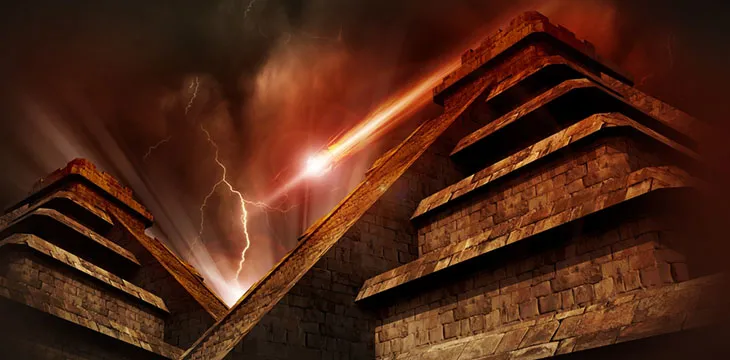|
Getting your Trinity Audio player ready...
|
This is an excerpt of “From Mayans to SVB — attempts to prevent societal collapse throughout history” thought piece that is first published on The Digital Wayfinder, the newsletter by George Siosi Samuels tackling topics from Web3 to Notion AI and ancient history.
Last week, we discussed Fractional Chief Community Officers. This week, we look at Silicon Valley Bank (SVB) again (now that some time has passed), specific (similar) examples from history—from Mayans to Romans to Ashantis, and ways solopreneurs can prepare for incoming issues related to financial systems.
Because, at the end of the day, all communities survive or thrive depending on—in large part—their economic health. As I’ve been learning from places like Guatemala and their Mayan history.
Learn from the past, always. https://t.co/GNnFmeGhO9
— George Siosi Samuels (@GeorgeSiosi) March 13, 2023
The above tweet of mine got a lot of interest during the week. So I’m going to expand on it a bit further.
It cites the example of the first Bank of United States (chartered June 23, 1913), which collapsed during the Great Depression under similar circumstances to SVB.
The tweet references a quote from Nobel-winning economist Milton Friedman, who argues that the collapse of the banking system during the Great Depression began with a similar bank run on a regional startup-focused bank and was exacerbated by Wall Street’s decision not to guarantee depositors.
The collapse of SVB could have far-reaching consequences beyond Silicon Valley, and the banking system as a whole may be at risk if depositors lose confidence in banks catering to the startup community. There is an interconnectedness of the banking system, which poses a risk due to its concentration in certain industries or regions. It is a warning to regulators and policymakers to remain vigilant in monitoring potential risks to the banking system. According to top Federal Reserve officials, it was a “textbook case of mismanagement.”
Similar situations, different times—Mayans, Romans, and Ashantis

The SVB fiasco may have been thwarted recently with a buyout and the U.S. government swooping in to protect depositors (at least). But throughout human history, numerous governments and elite groups have attempted to prevent societal collapse. Unfortunately, in the long run, they were not always successful.
So here are some examples we can hopefully learn from:
- The Maya Civilization: As I’ve been learning in Guatemala, the ancient Maya civilization was a sophisticated society that thrived in Central America for over a thousand years. However, it eventually collapsed around 900 AD due to a combination of factors, including environmental degradation, warfare, and political instability. Despite the efforts of Maya rulers to maintain their power and prevent societal collapse, they were ultimately unsuccessful.
- The Roman Empire: The Roman Empire was one of the most powerful empires in ancient history. However, it eventually collapsed due to a combination of factors, including economic instability, political corruption, military overspending, and invasions by barbarian tribes. Despite the efforts of several emperors to reform the empire, such as Diocletian and Constantine the Great, they were ultimately unable to prevent its collapse.
- The Ashanti of Ghana: Many mythological tales also depict attempts by governments and elite groups to prevent societal collapse but ultimately fail. One example is the tale of the Ashanti Empire in Ghana. According to legend, the Ashanti Empire was founded by a powerful king named Osei Tutu in the late 17th century. The empire eventually declined due to a combination of factors, including European colonization, internal power struggles, and economic instability. Despite the efforts of several Ashanti kings to maintain their power and prevent societal collapse, they were ultimately unsuccessful.
These examples serve as a reminder of the fragility of civilization and the need for constant vigilance and adaptation to changing circumstances.
Solopreneurs and bank runs
But what does this have to do with solopreneurs? Folks like yourself who may be running your own business or looking to start one?
As a solopreneur, it is important to prepare for any potential bank runs. One tip is to diversify your funds across multiple banks and financial institutions. Platforms such as Wise, PayPal (NASDAQ: PYPL), and Revolut can provide convenient and low-cost options for international money transfers and currency exchange. I personally use Wise (affiliate link) and Revolut for both business and personal.
Holding funds in multiple accounts can help to mitigate the risk of any one platform experiencing issues or collapses. It is also important to research the financial stability and regulatory compliance of any platform or institution before entrusting them with your funds.
In conclusion, the collapse of SVB is a reminder of the interconnectedness of the banking system and the need for constant vigilance in monitoring potential risks. History is filled with examples of governments and elite groups attempting to prevent societal collapse but ultimately failing—so always better to be prepared than surprised. Solopreneurs can learn from these examples by preparing for potential bank runs and diversifying their funds across multiple platforms and institutions.
Read the full piece and subscribe to The Digital Wayfinder newsletter by George Siosi Samuels here.

 09-04-2025
09-04-2025 





